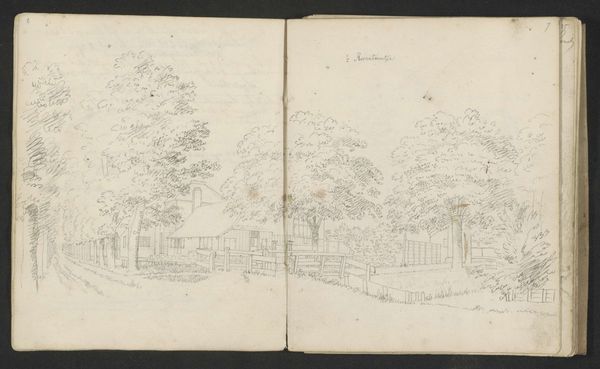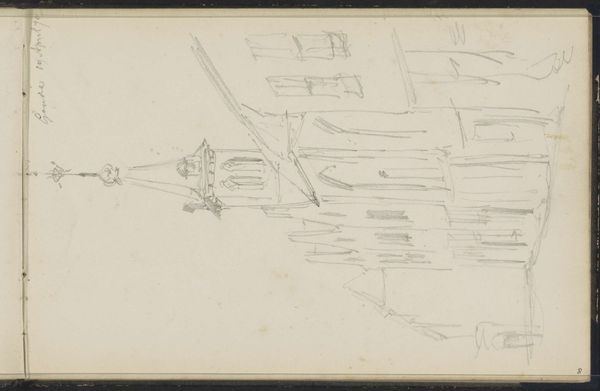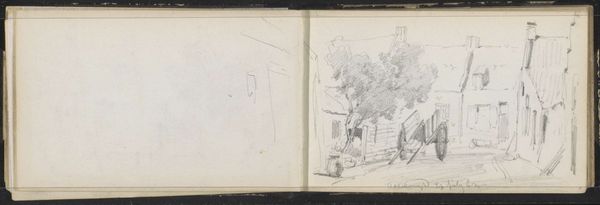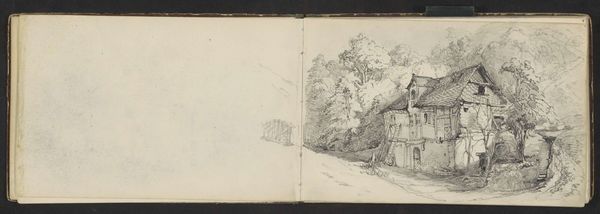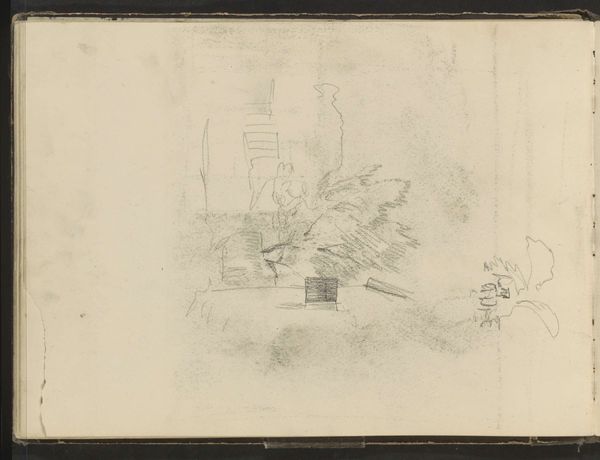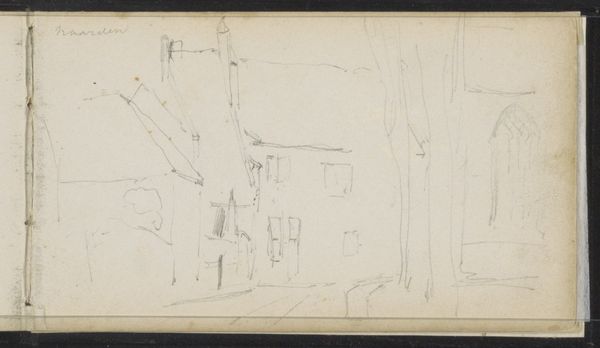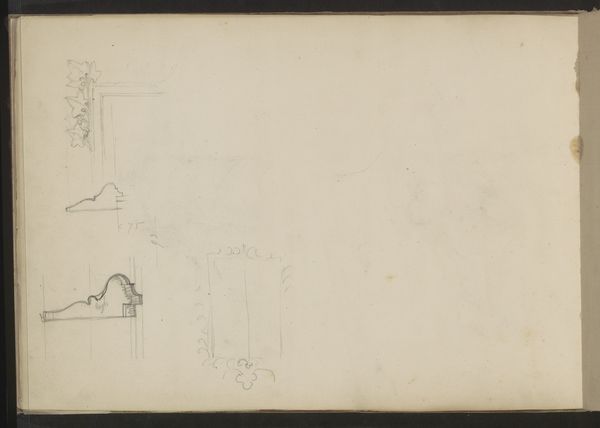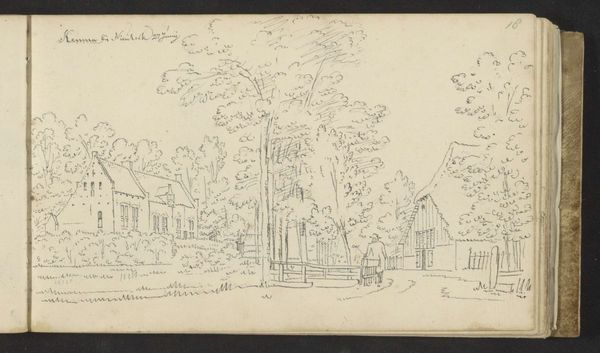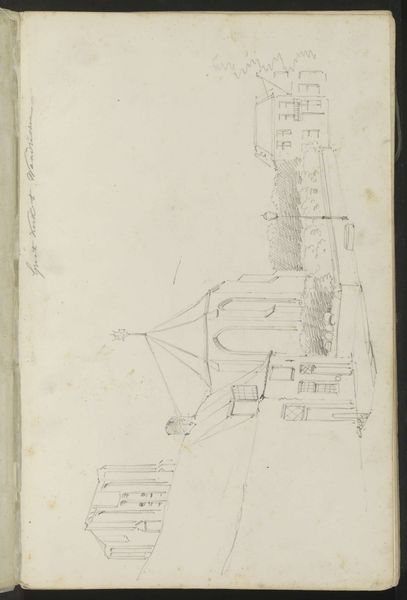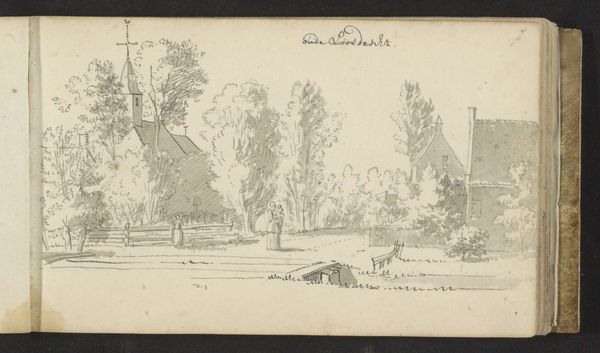
drawing, paper, ink
#
drawing
#
aged paper
#
baroque
#
pen sketch
#
sketch book
#
hand drawn type
#
landscape
#
paper
#
personal sketchbook
#
ink
#
sketchwork
#
pen-ink sketch
#
pen work
#
sketchbook drawing
#
cityscape
#
sketchbook art
Copyright: Rijks Museum: Open Domain
Curator: This unassuming sketchbook drawing, "Dorpsgezicht te Putten," dating from 1731, is by Abraham de Haen the Younger, part of our collection at the Rijksmuseum. It's ink on paper, a simple village scene. What’s your initial reaction? Editor: The sketch, so delicate, carries a sense of serene melancholy. The bareness on the left-hand page juxtaposed with the detailed buildings creates a palpable loneliness. I wonder, why just Putten? Curator: Well, looking at it through the lens of its material construction, this sketch probably represents an affordable means to document his environment. The sketchbook format enabled portability; paper and ink were common and relatively cheap materials. Editor: Yet, there's an immediate symbolic potency within the church steeple towering over modest dwellings. De Haen emphasizes hierarchy, perhaps unintentionally, suggesting the omnipresent influence of the Church in daily life. It represents spiritual dominance, doesn’t it? Curator: Dominance perhaps, but also protection? Consider the materiality, the simple line work creating protective walls, framing communal existence. The sketchbook itself as a tool protects and preserves. And look closer: the artist employs hatching, cross-hatching with thin dark strokes of the quill, which, as they accumulate, render a visual depth—lightness to darkness with remarkable precision! Editor: Yes, but what did that spiritual protection offer this 18th-century village? What memories and values are associated with it? Think of all the life milestones signified by that church. Baptisms, marriages... a constant presence. Curator: While acknowledging symbolic importance, one should also note it reflects an aspect of labour. Landscape art was a growing trend. The drawing allowed De Haen to study spatial relationships, textures and forms, later perhaps employed for larger commissioned works. It provided practice. Editor: It makes me reflect upon my hometown's cultural markers. Architectural symbolism endures; how people perceive their identities shaped by buildings from childhood—this church acting almost like an archetype of the village itself. It grounds people through generations. Curator: Precisely. Material processes reveal those long histories too. I appreciate it serves a more symbolic purpose than just production study now we’ve spent some time here. Editor: Me too!
Comments
No comments
Be the first to comment and join the conversation on the ultimate creative platform.

